Mashed potatoes
![]() : purè di patate
: purè di patate
What you need
— potatoes
— rock sea salt
— butter
— milk
— cold tap water
— potato masher
Directions
- Put enough cold tap water in a pot so that the potatoes will be covered. Add sea salt and turn on the gas (or the electric range as — unfortunately — in my case). Cover with lid to speed the process.
- Put some milk in a small pot, better if with high sides, and bring to boil slowly keeping an eye on the the pot as you take care of other things.
- Wash the potatoes; if they are dirty use a scrubber. Red-skin potatoes tend to be smoother and cleaner than the Russet variety so I often just wash them under running water.
- Cut the potatoes in thick slices and then again in half. This will make them cook faster and more uniformly.
- When the water starts boiling, add the potatoes and reduce the heat to medium/medium-high to keep the water boiling more gently.
- After five minutes or so, check a potato piece with a fork. Different kinds of potatoes require different cooking times. Red-skins seem to be harder and take a little longer.
- When they are cooked, but not overcooked, drain most of the water. I keep a little bit of the cooking water to facilitate mashing.
- Mash with the potato masher and incorporate some butter.
- Put back on the fire at lower heat and start incorporating the hot milk a little at a time. The milk will be absorbed faster in small increments.
- Taste the mashed potatoes to see if they need more salt. If I need to add salt at this stage, I use fine sea salt instead of coarse. You can also add some freshly ground pepper.
Notes
Potatoes
Variety: I use either Russet or red potatoes depending on which kind looks better at the market. I like red potatoes when I want to keep the peel (good for speed and for retaining nutrients that are just under the skin). They have different textures and I like them both, but I am not fond of Russet potato skins… too chewy. Try other potato varieties as well; as a rule of thumb, get what's good locally.
Butter
I use unsalted so I have more control over the amount of salt in general.
Milk
I like whole milk (it tastes better), but you can substitute.
Variations
I've experimented with adding milk first and butter at the end, using cold milk instead of hot, and so on. This sequence (butter first, then hot milk) gives me better results in terms of texture and taste. Do your own experiments to find out what works best for you.
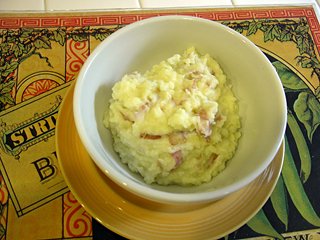
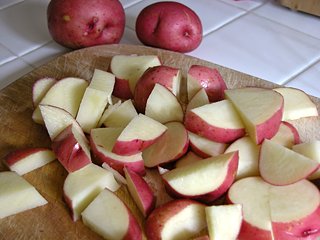
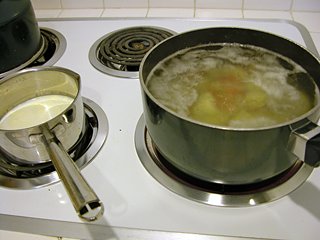
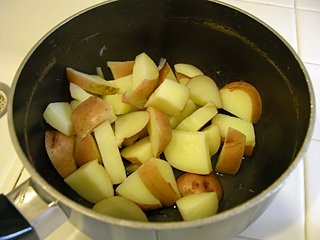
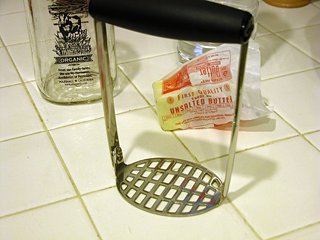
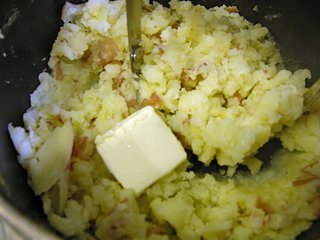
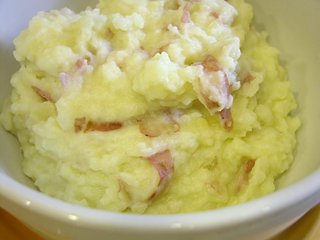
Comments
Perchè non usi la pentola a pressione?
Posted by: lucia | June 9, 2006 11:31 AM
I don't use a pressure cooker, because it's a pain in the butt to clean and in this case the time savings are negligible.
Posted by: Francesca | June 9, 2006 3:05 PM
I am totally hooked on your weekly cooking posts!
Posted by: Bobbi | June 11, 2006 10:04 AM